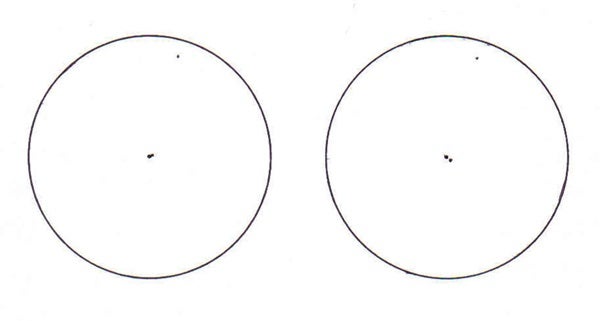In my July 2011 column, I wrote about observing visual binaries over a lifetime as they undergo a large portion of their orbits. I’ve followed the orbital shift of a trio of binary stars, including Alpha (α) Geminorum, better known as Castor. Attempting to split this magnitude 1.9 and 2.9 pair in 1970 proved marginally successful. At the time, the two were separated by 1.8″ — as close to one another as they can get (an orbital position called “periastron”). Six years later, they had widened enough (2.1″) to be cleanly split at 120x. At present, half that magnification will reveal both components, now separated by a comfortable 5.0″. They will remain an easy small-scope target until their next periastron sometime during the 25th century.
Even a small backyard telescope can reveal the orbital motion of a binary star — as long as you have a little patience! These sketches, based on observations I made with my 3-inch f/10 reflecting telescope at 120x, show the position shift of Castor between 1976 (at left) and 2008 (right).










